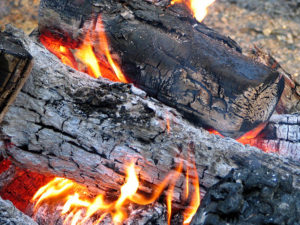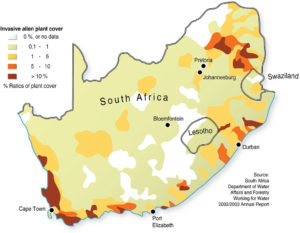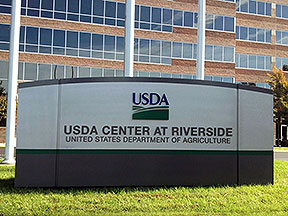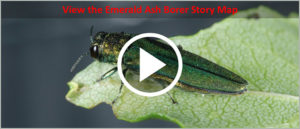We know that people moving firewood long distances is cause for great concern because of the likelihood that tree-killing pests will be transported to new and previously uninfested locations. This concern has been heightened by the USDA APHIS proposal to deregulate the emerald ash borer (EAB). As the principal federal “quarantine pest” transported by firewood, the EAB provides the legal foundation for most federal and state firewood regulations. (Of course, the EAB regulations also govern other articles that could transport wood-boring pests). (See earlier blogs here and here.)
Most forest pest professionals agree that the greatest risks are associated with individuals who transport firewood for recreational camping or summer homes. These people have proven to be the most difficult to regulate and the most likely to not see – or to ignore – messages intended to discourage them from moving firewood. The Nature Conservancy manages the “Don’t Move Firewood” program. It has done polling on messages and impact and concludes that the percentage of U.S. voters who have heard a “don’t move firewood” message remains steady and that those who have heard that message are less likely to transport firewood, especially over distances greater than 50 miles. More details are here
A recently published study by several academics and one forest service scientist reinforces The Conservancy’s earlier conclusion about the importance of outreach efforts as an essential component of programs intended to manage wood-boring pests. On the other hand, the new study points to additional nuances in crafting messages that will be effective in changing people’s behavior.
Findings
Daigle et al. 2018 (see full citation at the end of the blog) surveyed 272 people who were camping in public (state) or private campgrounds in three New England states in 2013 – four years after each of those states adopted regulations prohibiting out-of-state firewood and began their outreach efforts. Some campers apparently feel a strong connection to the place they are visiting, as shown by the fact that 84% of the 79 campers at private campgrounds had spent two or more nights camping in the same state in the previous year. That emotional connection might provide a motivation that could be activated to persuade those campers to stop transporting firewood (see below).
The authors found that slightly more than 25% of the 272 respondents reported that they often or always brought firewood from home for camping. More discouraging is that they found that people might not comply even when informed about the risks. Instead, compliance depended largely on the individual’s motivation and commitment level rather than knowledge. Worse yet, campers categorized as “highly involved” in the forest pest issue were just as likely to transport firewood from home as were others. Apparently, these non-compliant campers did not fully “connect the dots” between their concerns about forest health and their own actions. See below for Daigle et al.’s suggestions for ways to help people make those connections.
To understand the role of motivation, Daigle et al. tried to assess the strength of each camper’s beliefs about the relationship between tree-killing pests and the transport of firewood by recreational campers.
Overall, 25% of respondents were very highly involved with tree pest issues; another 22% were highly involved. Respondents’ perception of the relationship between damaging tree pests and transport of firewood differed significantly based on their levels of involvement. Respondents with a low level of involvement were less likely to agree with three statements (listed below) that firewood-associated pests pose a serious threat. Campers with very high levels of involvement strongly disagreed with three other statements that either downplayed the threat or portrayed the respondent’s compliance as “useless” as long as others continue to transport firewood.
Perception questions against which respondents’ agreement or disagreement was measured:
- “There is not much one individual can do about invasive pests brought in by firewood”
- “I don’t think invasive pests brought in by firewood are very important.”
- “The threat of invasive pests brought in by firewood is serious.”
- “As long as other people continue to bring firewood from home, my efforts to prevent invasive pests are useless.”
- “The invasive forest pest risk from firewood is exaggerated.”
- “In the long run, things will balance out with invasive pests.”
Rationale
Respondents’ most frequent explanations for why they take firewood from home when they go camping were cost, quality, and convenience. The most frequently cited reason for not transporting firewood was that the respondent knew that it was not allowed.
Level of pest awareness:
While nearly all respondents (92%) had heard something about non-native pests killing trees, but 57% could not recall the name of a specific pest in the absence of a prompt. When asked about the emerald ash borer and Asian longhorned beetle, more respondents had heard about the ALB (77% v. 52%). Most said the principal source of information was a state agency.
Suggested Actions
Daigle et al. conclude that authorities need to increase citizens’ exposure to outreach materials in order to activate concern and bring about desired actions to curtail risk of pests in firewood.
One clear need is to counter many campers’ belief that their wood is safe so it is okay to transport it regardless of the regulations. Often they based that belief on the fact that their home is not in a designated quarantine zone. Daigle et al. suggested that educational material should try to counter this belief by emphasizing the time lag between a pest’s establishment and its detection.
To help “connect the dots” between campers’ concerns about forest health and the implications of their actions (transporting firewood), survey respondents suggested using more visuals showing the destruction caused by the invasive forest pests, especially in areas they care about – close to home or favorite recreation areas. Daigle et al. thought such pictures would “help the campers with high involvement to trigger activation of attitudes with the association of forest pests and firewood transport.”
Other suggestions for strengthening outreach were to ensure that the message
- Is novel – that it does not simply reiterate a camper’s initial belief system.
- Produces agreement by the recipient without generating counterarguments.
- Is relevant to the audience’s concerns.
They also suggested that campgrounds (public and private) help motivate campers to leave firewood at home by coordinating with local firewood vendors to provide competitively priced firewood at the campground or by including the cost of providing some firewood in the camping fee.
Daigle et al. made two other suggestions that call for stronger actions.
First, they suggested that outreach programs incorporate incentives or rewards to engage people who don’t have a high level of involvement in forest health issues.
Second, they suggested that authorities reinforce the educational message by using “more direct” actions, such as
- confiscating illegally transported firewood at check stations,
- issuing warnings about such actions, or
- administering fines for moving non-compliant firewood.
The authors suggest that state agencies should consider taking these actions – but I see no reason why federal agencies should not also.
Conclusions re APHIS’ Proposal to Deregulate EAB
Daigle et al. conclude that outreach efforts aimed at curtailing movement of firewood need to be continued. They are a critical component of overall management programs targetting non-native tree-killing pests – programs developed through decades of research and trials. The motive is clear: more effectively delaying these pests’ spread provides large benefits to municipalities and homeowners.
These are the same points made by many who opposed APHIS’ proposal to deregulate the emerald ash borer.
In its comments to APHIS, The Nature Conservancy noted that the domestic EAB quarantine had been effective in limiting spread of the pest through two of the most important pathways – firewood and nursery stock. The resulting slower spread had protected three-quarters of the ash range in the United States and bought time to develop mitigation measures.
Further, eliminating the federal quarantine would not only unleash this pathway for long-range movement of EAB but undermine the many federal, state, regional, tribal, private, and non-profit partners’ efforts to curtail movement of all invasive forest pests in firewood.
Many other commenters, including several state agencies, the National Association of State Foresters and Southern Group of State Foresters called for APHIS to continue leading national efforts to curtail spread of EAB and other pests through careless movement of infested firewood. The Montana Department of Natural Resources and Conservation and NASF specifically urged that APHIS reinstate the National Firewood Task Force (which APHIS led in 2009-2010).
The Don’t Move Firewood program has a more informal blog on this topic, available here.
Source
Daigle, J.J., C.L. Straub, J.E. Leahy, S.M.De Urioste-Stone, D.J. Ranco, N.W. Siegert. How Campers’ Beliefs about Forest Pests Affect Firewood Transport Behavior An Application of Involvement Theory. Forest Science XX(XX):1-10 https://academic.oup.com/forestscience/advance-article/doi/10.1093/forsci/fxy056/5232804




